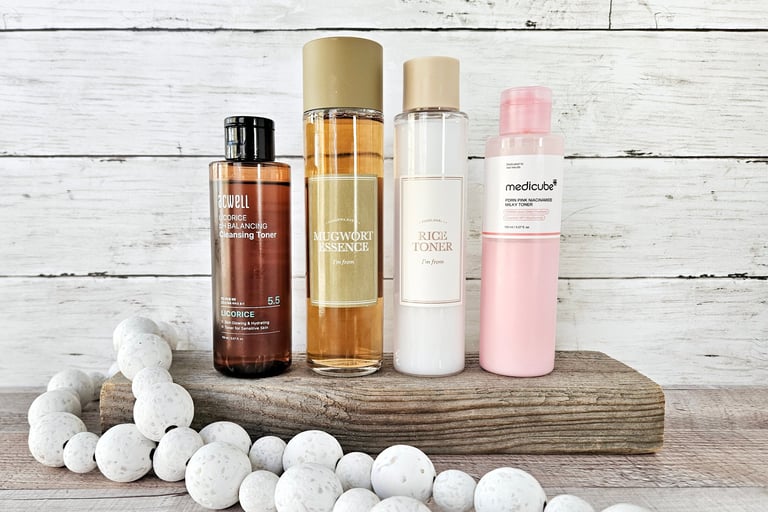Why Everybody Is Talking About Skin Flooding (And Why You Should Be Doing It)
Discover the glow-boosting secret everyone’s talking about! Here’s how skin flooding transformed my dry skin, and how you can try it too.
SKINCARE


Disclosure: This post contains affiliate links, which means I may earn a small commission at no extra cost to you. I only share products I personally use and love.
I recently started a skincare routine called skin flooding. Four months in, I’m seeing fewer fine lines, smoother texture, and (bonus!) a major improvement in my keratosis pilaris on my arms. So naturally, I had to share it with you.
What Exactly Is Skin Flooding?
You might’ve heard the name before, seen it trending on TikTok, or read it in a beauty magazine: what everyone’s calling “skin flooding” is really just a smart, hydration-heavy skincare technique. It’s rooted in Korean skincare wisdom (yes, the land of glass skin and double sheet masks), and it involves layering hydrating products in a specific order to truly saturate your skin with moisture.
In simple terms: you cleanse, apply toners/essences on damp skin, then go into your actives/serums, and finally lock it all in with a moisturizer. It’s a little like wetting a kitchen sponge before you add soap—if you skip the water, the soap won’t lather as well, right? Same idea for your skin. If your skin is dry when you apply actives, they won't absorb as well, making them less effective. And let’s be honest, if you’re investing in good skincare, you want every drop to count. Proper hydration helps those actives work their magic to the fullest.
Why I Started—and Why I Love It
I live in Colorado. That means hello dry mountain air, indoor heating, and skin that ends up tight, unhappy, and maybe a little cranky-looking. Enter skin flooding, which for me has been like giving my skin a big drink of water.
Four months in and I already see a decrease in fine lines, especially on my forehead and the corners of my eyes.
My skin texture is more even.
My keratosis pilaris (those little reddish bumps on my arms) has really improved when I apply toner to my arms then moisturize.
The Science Bit
Here’s the nerdy breakdown: your skin works best when hydrated, and when you apply actives like hyaluronic acid or niacinamide on damp skin, they absorb better. Why? Because water is a vehicle. A damp surface means the active ingredients can migrate deeper into your skin rather than sitting on top. And if you live in a dry climate like me, applying something like hyaluronic acid onto dry skin can actually make your skin drier (it pulls moisture from wherever it can find it, and in a dry environment, that source is your deeper skin layers instead of the air).
Where I Discovered It + My Favorite Toners
I stumbled across skin flooding thanks to Ashley Mixon on TikTok and followed her “Mixon Method”. Her skin looked so glowy and beautiful, I just had to try it myself. Here are the toners I use and genuinely love, and the order I apply them:
Acwell Licorice pH Balancing Cleansing Toner
I’m From Mugwort Essence Toner
I’m From Milky Rice Toner
Medicube Pink Milky Toner with PDRN
How to Try Skin Flooding
Cleanse your face gently (skip harsh scrubs). Ashley Mixon recommends using an oil based cleanser. I use La Roche-Posay, but there many different brands out there that will work with your skin. Apply without water and massage into skin. Next, add a bit of water (to emulsify) and massage into skin. Rinse. Wash your face a second time with a water based cleanser and rinse.
You will want to apply your toners/essences while your skin is still damp. If needed, you can splash water on your face, or if you're a little extra like me, you can try a facial mist spray, like Avène Thermal Spring Water.
Apply one of your favorite toners or essences (you can use a cotton ball to apply, or just pour a little into your palm and spread across your skin). Start with lightweight toners first, followed by your heavier toners (think milky/creamy toners last). You're going to want to do at least 7 layers of toner. You can reapply the same toner more than once, so if you're new to this, try starting with just one toner and applying it 7 times to see how your skin reacts before adding additional toners. When I first started, I applied everything, and I had a reaction to one of the toners I was trying but couldn't figure out which one. If I had started slowly, it would have made things much easier.
Follow immediately with your actives/serums (like hyaluronic acid or niacinamide).
Lock it all in with a richer moisturizer. You can also apply this routine to your arms or legs if you’ve got dry patches or keratosis pilaris. It completely transformed my arms. I actually have smooth skin on the backs of my arms for the first time in my life!
After you're sure everything is working well with your skin (i.e. you aren't having any reactions), use this method regularly. I do it morning and evening before bed. It is epecially helpful in dry environments.
Is This Right for You?
If you’ve got dry or dehydrated skin, uneven texture, or live somewhere with low humidity, yes, this is very likely for you. If you’re oily or acne-prone, you can try it, but proceed slowly, watch for pilling, and pick non-comedogenic hydrating products.
Final Thoughts
Skin flooding might sound like a trend, but it works because hydration is universal. Whether your skin is drinking in Colorado air or city-seasoned humidity, the idea is simple: give your skin what it needs—water, nutrients, and time to absorb them.
If you’ve been hunting for a skincare routine that’s both effective and feels downright cozy, this just might be your next favorite ritual.
As an Amazon Associate, I earn from qualifying purchases.


